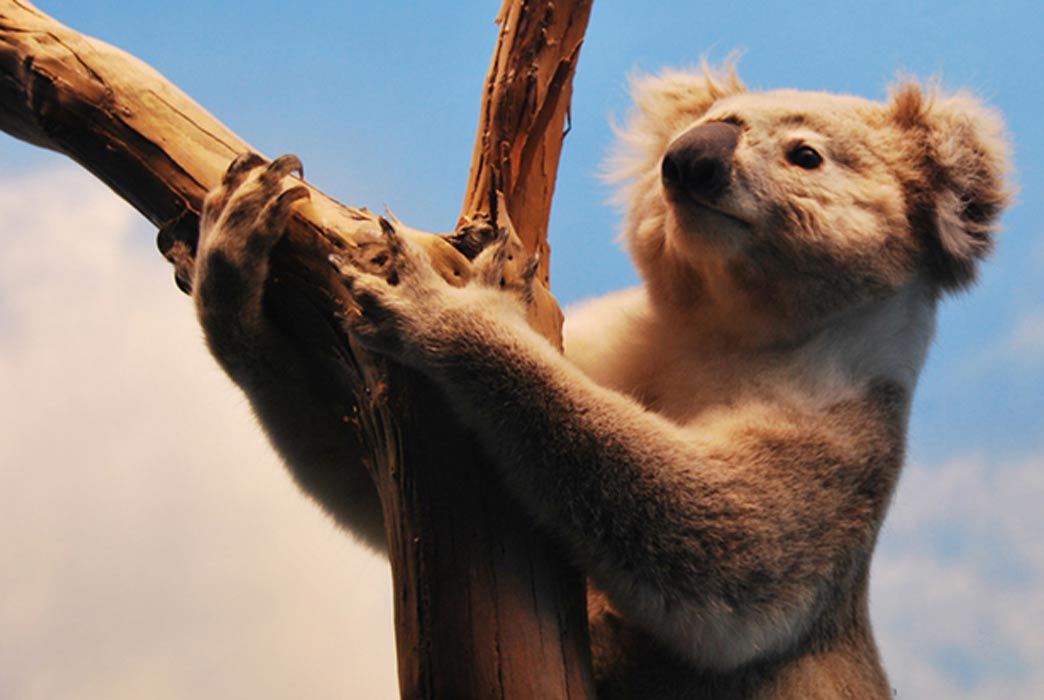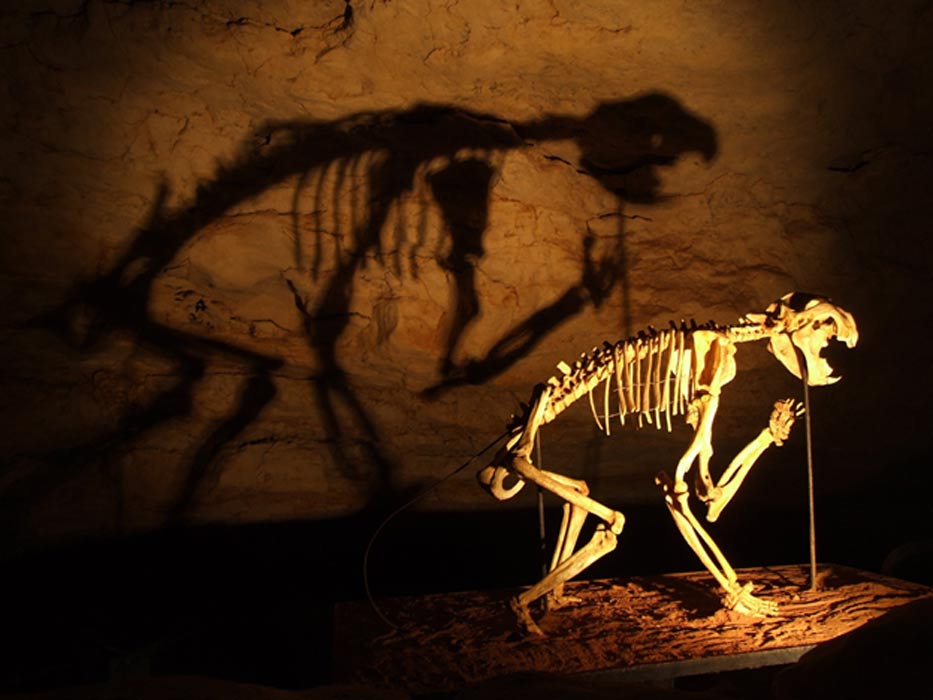
Koalas: Dreamtime Legends, Ancient Symbols, and their Dangerous Prehistoric Ancestors
The koala is a major draw for Australian zoos and wildlife parks. They are featured heavily in Australia-related advertisements, cartoons, and soft toys. If one were to name the animal most closely associated with Australia, it is very likely that the koala or the kangaroo would be mentioned. The koalas’ teddy bear-like face and the virtual absence of a tail, together with their stocky build and their long legs, give them a bear-like appearance. Therefore, they are also commonly referred to as “koala bears” or “native bears”.
Personality-wise, the koalas’ most enduring quality is probably their laid-back nature. They generally look as happy and comfortable being in the arms of humans as they are climbing trees and eating eucalyptus leaves. The name “koala” comes from an Aboriginal word which means “no drink”. This word is given to them because the aborigines found that the koalas do not drink water, as they receive most of their hydration from the Eucalyptus leaves which they eat. They only drink when they are ill or at times when there is not enough moisture in the leaves.
There were once several different kinds of koala—all but one of which had died out. Evidence of a “giant” koala, which was more than twice the size of its modern descendants, exists in fossils dating back more than 40,000 years. Mentions have been made associating the koala with the Marsupial Lions, the carnivorous pre-historic animals, which is said to be one of the few possible ancestors of the cute and cuddly koalas we know today.

Killer Koalas? A skeleton of a Marsupial Lion (Thylacoleo carnifex) in the Victoria Fossil Cave, Naracoorte Caves National Park. (Public Domain)
A Dreamtime Legend of the First Koala
There was very little of the habits of the indigenous plants and animals of Australia that the Aborigines did not well understand. The Aborigines have legends or, at least, ascribed reasons for all the little ways, tricks and habits of plants and animals. Therefore, they of course have a rich and varied collection of legends about koalas and symbolisms attached to them.
The koala is such an important part of the aboriginal culture that they are associated closely to the Aboriginal ancestral beliefs. They are also featured frequently in Aboriginal arts and Dreamtime legends. The Tharawal tribe believed that the koalas helped row the boat that brought them to the continent. Another myth tells of how a tribe killed a koala and used its long intestines to make a bridge for people from other parts of the world. Tribes in both Queensland and Victoria see the koala as a wise animal and sought its advice.
The story of Koobor, the koala boy, is perhaps one of the most well-known legends of the first koala. There was once a young boy named Koobor whose parents died, and who was left in the charge of his aunt and uncle. Australia was a dry land at the time and water was hard to come by, but his greedy aunt and uncle would not share their water with him and forbade him to drink the water they had collected from the creek. Whenever they left the hut, they would hide the water vessels so that Koobor would not be able to find them. Whenever he was very thirsty, Koobor was forced to eat eucalyptus leaves.

Sculpture by Australian artist William Ricketts (CC BY-SA 2.0)





